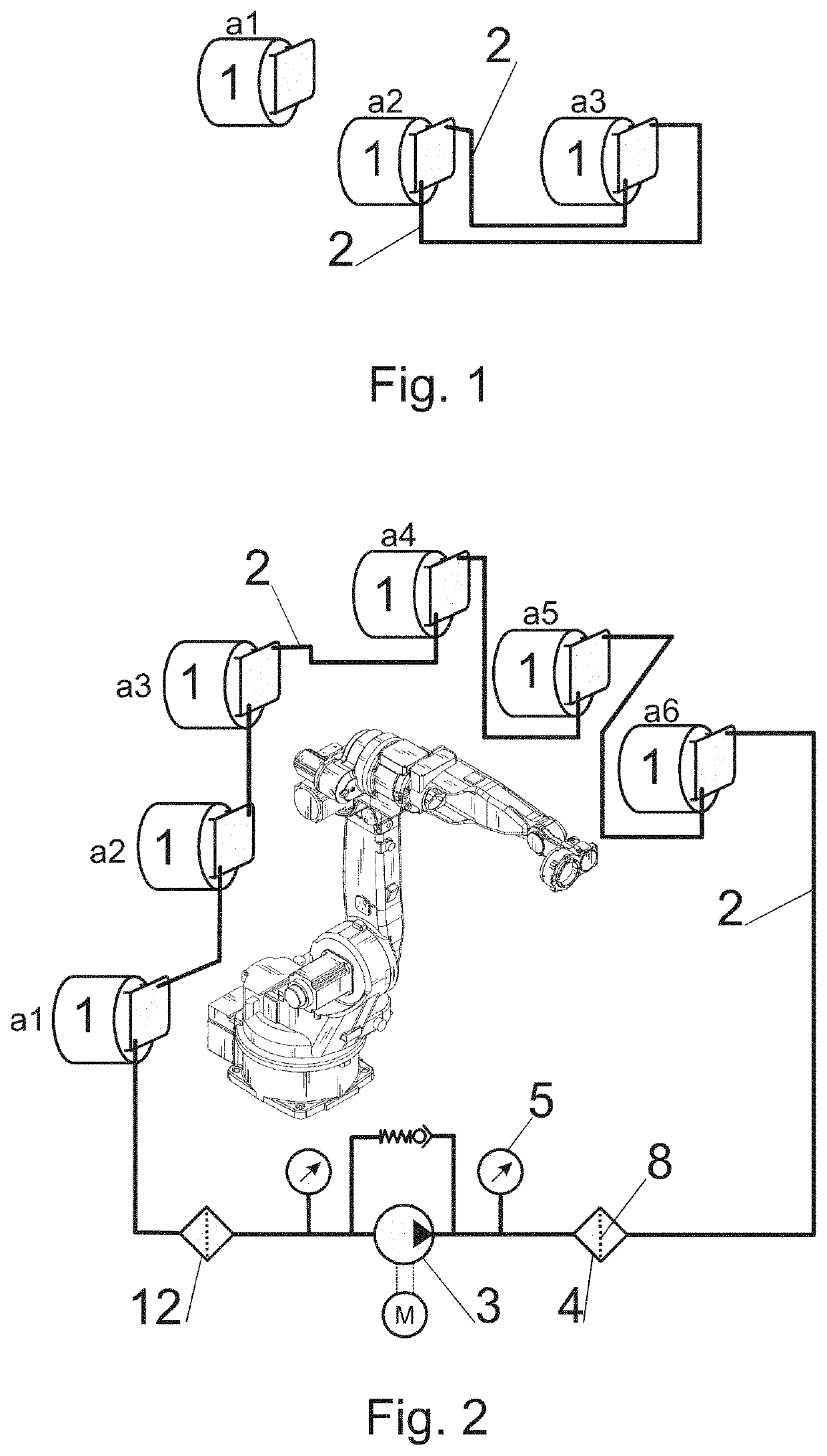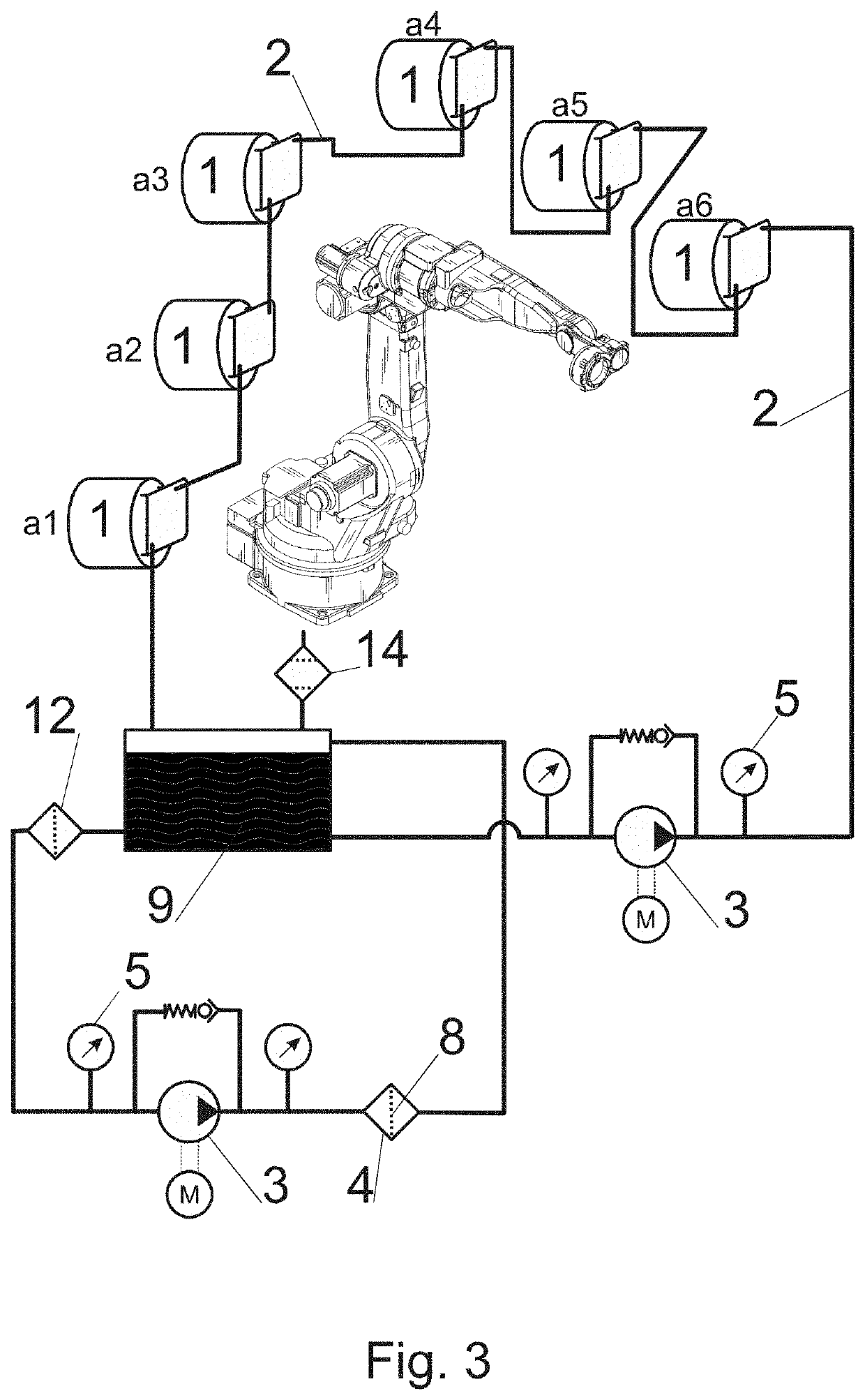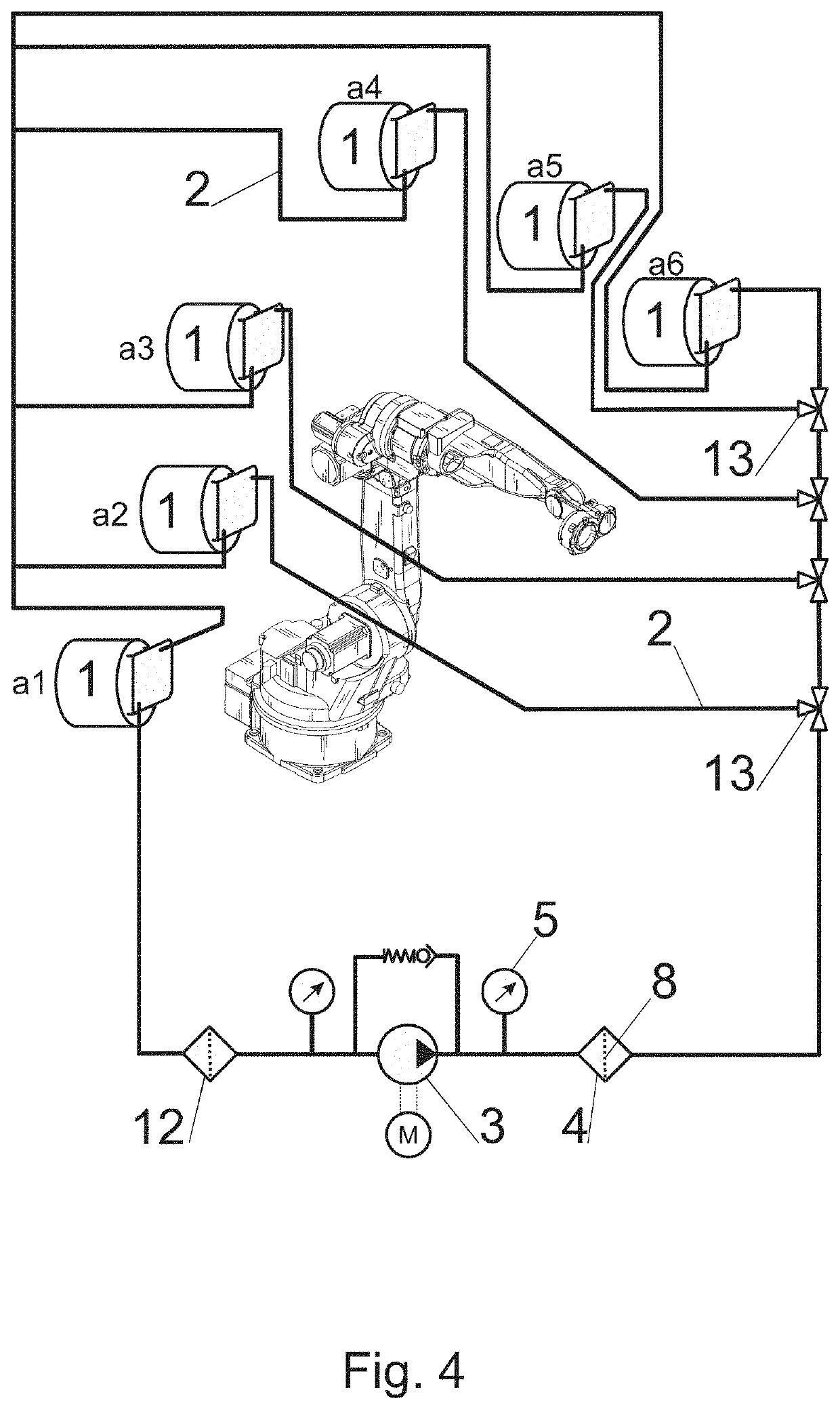Oil-lubricated kinematic module connecting system, mainly the transmission or bearing modules of industrial robot; method of kinematic module lubrication
- Summary
- Abstract
- Description
- Claims
- Application Information
AI Technical Summary
Benefits of technology
Problems solved by technology
Method used
Image
Examples
example 1
[0046]In this example and based on FIG. 1, the manipulator has four rotary joints which are mounted and moved through kinematic modules 1 in the form of bearing reducers. Three of these kinematic modules 1, rated as the most dynamically exploited, are fitted with gearboxes connected by piping and hoses. Oil circulation between the kinematic module boxes 1 is provided by movement of the planet gears of the reducers themselves; there is no need to connect the pump 3.
example 2
[0047]In this example, based on FIG. 2, the oil fillings of all six kinematic modules 1 of the industrial robot are interconnected. The connection is a simple serial-connected circulation circuit where the oil flows from the highest kinematic module 1 to the next kinematic module 1. From the last, lowest kinematic module 1, the oil is pumped through the pump 3 via the suction filter 12 and via the filtration device 4 to the highest kinematic module 1. To protect the pump 3 and its motor, the system is fitted with bypass valve and two pressure sensors connected before and after the pump 3.
[0048]The box of the lowest kinematic module 1 is being used as an oil box for the whole system. This kinematic module is designed for the largest static and dynamic load as it can carry all the adjacent arms and joints.
example 3
[0049]In this example, according to FIG. 3, the serial connection of the previous example is supplemented by a separate filtering circuit comprising an oil tank 9 into which the oil flows from the last kinematic module 1. Compensator of pressure changes 14 is connected to the oil reservoir 9; in this example in the form of a breathing filter. The oil reservoir 9 is connected to the branch with kinematic modules 1 by means of a pump 3; it is also connected to a filter device circuit 4 comprising a replaceable filtration element 8, pump 3 with motor, bypass valve and a pair of pressure sensors. The suction filter 12 is being used as protection against introduction of coarse impurities into the pump 3.
PUM
 Login to View More
Login to View More Abstract
Description
Claims
Application Information
 Login to View More
Login to View More - R&D
- Intellectual Property
- Life Sciences
- Materials
- Tech Scout
- Unparalleled Data Quality
- Higher Quality Content
- 60% Fewer Hallucinations
Browse by: Latest US Patents, China's latest patents, Technical Efficacy Thesaurus, Application Domain, Technology Topic, Popular Technical Reports.
© 2025 PatSnap. All rights reserved.Legal|Privacy policy|Modern Slavery Act Transparency Statement|Sitemap|About US| Contact US: help@patsnap.com



